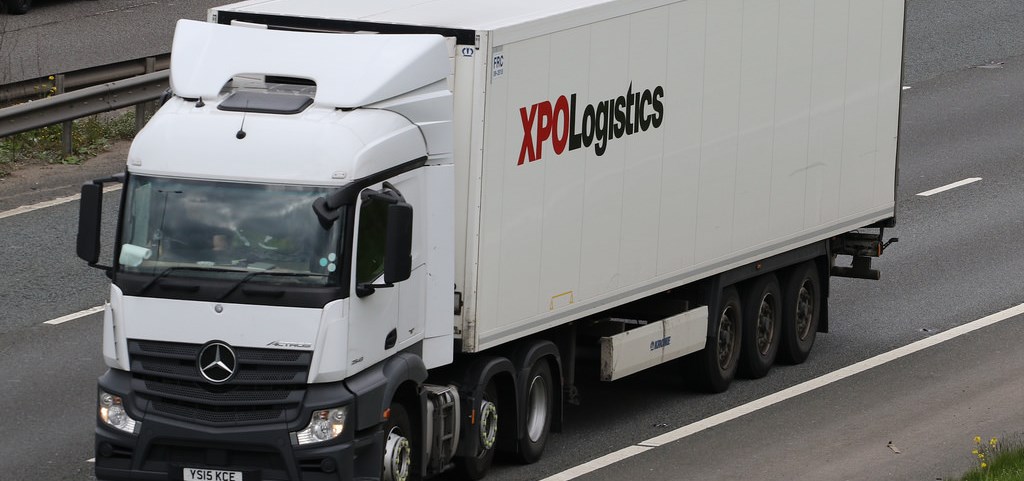Brave new world?
Receiving a parcel on your doorstep from Amazon or any of the number of online retailers often disguises what’s going on behind the scenes where your order is processed.
But a quiet revolution is occurring at these warehouses, where books, food and a multitude of other consumer products are stacked, sorted and retrieved – not only by humans but also by robots.
The future which we thought only existed in sci-fi films, has, in fact, already arrived.
As the Financial Times highlighted today (August 25), many companies, especially in e-commerce, are heavily investing in new robotics technology.
Ocado, an online UK grocer, uses automation to store and retrieve items, based on a grid structure over which robots hover. The robots stop at a specific grid block, containing, for example, bins of milk or bread. They then lower themselves into the block and pick up a bin, then move on to another block as instructed. The robots will then go to the periphery of the “chessboard” where human workers bag the items that the robots have retrieved.
At a warehouse in Manchester, Amazon uses mobile robots, which are instructed to lift specific shelving units containing a specific product. The robots then transport the shelving units – weighing more than 300kg – to human workers who pick out the products from the shelf for orders. Every day, more than 2,000 of these mobile robots help process hundreds of thousands of orders.
â€Sawyer’ the co-bot
The FT also highlights the growing use of â€co-bots’ – robots that work with humans and are responsive to their touch. At a DHL Supply Chain warehouse in Liverpool, “Sawyer”, a co-bot, has not only an articulated arm and suction grabbers, but it also has eyes on a screen “face”. It works with people on the production line, helping with repetitive tasks that for humans would be painful.
Unite national officer Matt Draper believes that the power of automation has great potential – but only if it is harnessed carefully with trade unions seen as partners in its future development.
“We have to look not just at job creation but what the actual value of these future jobs will be,” he explains. “That means taking into consideration both rates of pay and skill levels – jobs that will be rewarding both financially and psychologically.”
“For example, if we have automated trucks, will jobs created from this automation be more highly skilled and highly paid? Will say, a former driver now be on a higher wage in charge of a whole convoy of automated trucks? Or will everything be totally computerised, leaving what workers are left on lower pay?”
Draper dispelled the myth of trade unions fighting technological progress.
“Unite will not take a Luddite approach to automation – we will not be out there smashing machines,” he said. “Rather we believe that the future role of trade unions is to hold people to account, to ensure that we prepare ourselves for this brave new world. We want to be involved from now, from the earliest stages of automation – it’s an issue that will at one point or another affect all workforces.”
Draper added that alongside trade union involvement he believes there must be greater responsibility from both the state and employers to ease the transition to increased automation.
Robotics revolution
If the robotics revolution translates into a large-scale displacement of jobs, Draper highlights the role a government guaranteed basic income could play – an idea that Unite put forward in a motion at last year’s TUC conference.
Reskilling and training must also play a vital role, one in which government, business and trade unions all play their part.
The way in which much of the automation that has been introduced in the logistics sector so far, Draper notes, does not bode well for workers.
“We’ve certainly seen a rise in casualisation [and] the gig economy — of just clicking and getting people to turn up [for work].”
“Have we seen a rise in full-time, secure employment? No we haven’t.”
He highlights how one company recently put together proposals for a new warehouse that will be semi-automated without having any discussions with the workforce.
“There was no trade union consultation,” he said.
Whatever happens in the future world of work, Unite will not countenance any race to the bottom on wages, terms and conditions for its members.
This idea was reiterated today (August 25) after news emerged that the Department for Transport (DfT) said it was funding trials of semi-automated trucks on UK motorways.
Using a concept known as platooning, up to three wirelessly connected HGVs will travel together, all controlled by a lead vehicle, including breaking, acceleration and steering. Each vehicle will have a driver who can take control of the vehicle at any time.
Safety concerns
Unite and other organisations have expressed concern over the technology’s safety.
“The crowded and cramped roads of Britain are a far cry from the long straight highways of the US and Europe where the ‘platooning’ of lorries has been tested,” said Unite national officer Adrian Jones.
“While Unite isn’t against the use of technology that makes our members’ jobs easier, it should not come at the cost of jobs and wages of highly skilled lorry drivers,” he added.
“It remains to be seen whether wireless convoys of lorries are actually a realistic option in the UK.
“As well as major issues around safety, there’s a whole host of practical issues such as the order of a convoy where different hauliers are involved.”
Jones pointed out that no haulier will want its lorry at the front of a convoy for too long, but instead in the middle where their lorry will use less fuel than their competitors.
“It is vital that the Department for Transport engages with Unite and listens to the views and concerns of lorry drivers in the testing of this technology,” he said.
Jones also highlighted the issue of roadside facilities for lorry drivers.
“Some of the facilities lorry drivers have to rest up in quite frankly shame Britain’s roads,” he said. “If the DfT can invest over £8m in driverless technology it can invest in decent roadside facilities for Britain’s truckers.”
*Main pic of Sawyer from Financial Times video, August 25
 Like
Like Follow
Follow

